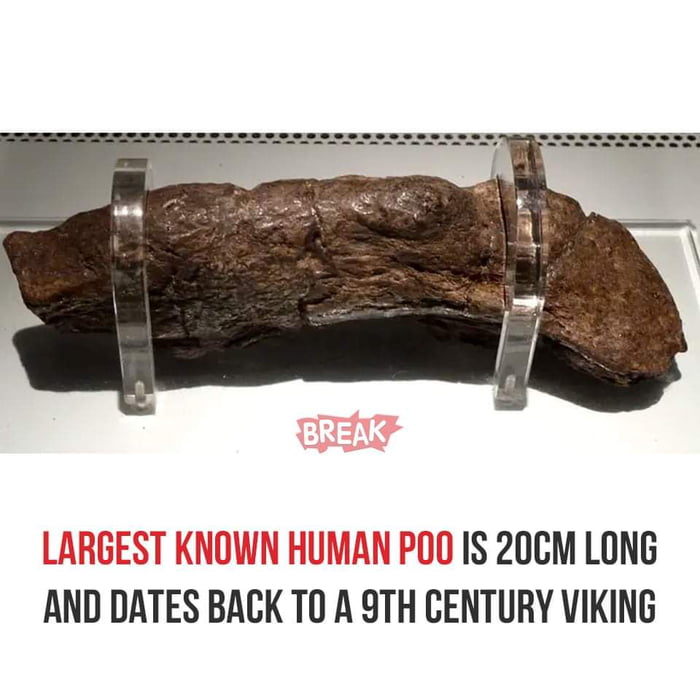
If you’re having breakfast or eating right now, please do not read this blog entry.
I really didn’t want to write this blog, but it’s too irresistible to ignore. In fact, I cannot believe I haven’t seen this before as, the other day, guess what popped – or should I say pooped – up in my social media feed? I know, that’s too far-reaching. It turned out to be The Lloyds Bank Turd. Yueh!!!
The real question should be: what is The Lloyds Bank Turd?
It’s exactly what it says: human pooh. The thing is that it’s 1,000 year old human pooh and the biggest turd ever found, preserved in a fossilised form and, to give it a nicer term, it’s actually called The Lloyds Bank Coprolite. Coprolite is a term that just means old manure.
The big, "precious" poop is officially called the Lloyds Bank Coprolite – the word "coprolite" just means old manure – and it is the biggest preserved poop of a person that has ever been found. It was worn by a sick Viking in the 9th century AD. This log is thought to be the biggest ever preserved poop; it is 1,200 years old; and is now worth around $39,000 and on display in York Museum, Britain.
This piece of fossilized Viking poop is so well-preserved, one paleoscatologist (poop archaeologist) called it as “precious as the crown jewels.”
Measuring 20 centimetres (8 inches) long and 5 centimetres (2 inches) wide, the massive coprolite is believed to be the largest example of fossilised human poop (paleofeces) ever found.
But why is it called the Lloyds Bank Coprolite?
Well, the specimen was found in 1972 by construction workers in York, northwest England, while they were building a Lloyds branch office. The area was once ruled by Norse warriors and this is why its name comes from the bank Lloyds Bank.
Seems rather appropo?
Anyways, it turns out that, as a historical item, the Lloyds Bank Coprolite is actually really important as it tells us a lot about Viking life 1,200 years ago. It shows that this Viking ate mostly meat and grain, and hardly any fruit or vegetables. It is also unusual as most poop disintegrates into the ground, but this survived because the soil in York is predominantly made up of biological matter like leather, wood, bone, various types of cloth, and tons of, ahem, human waste. Normally this matter breaks down and rots away fairly quickly, leaving a mulch that is largely useless to archaeologists. However, much of York’s soil is waterlogged and oxygen-free. This has left some of this centuries-old waste remarkably intact.
If you want to know more, click here and, if you want to see it, go to the Jorvik Viking Centre, York.
Finally, what really surprises me, is how Lloyds Bank have not shone a light on this amazing piece of history and used it in their branding. Over to you Charlie.
Chris M Skinner
Chris Skinner is best known as an independent commentator on the financial markets through his blog, TheFinanser.com, as author of the bestselling book Digital Bank, and Chair of the European networking forum the Financial Services Club. He has been voted one of the most influential people in banking by The Financial Brand (as well as one of the best blogs), a FinTech Titan (Next Bank), one of the Fintech Leaders you need to follow (City AM, Deluxe and Jax Finance), as well as one of the Top 40 most influential people in financial technology by the Wall Street Journal's Financial News. To learn more click here...


